8 Designing the nodes
This chapter concerns the drawing of the nodes, especially the configuration of their graphical semiology. Nodes are currently drawn exclusively in the form of circles.

Note: other geographic information layers (tiles, …) can also be displayed in this section.
8.1 Nodes semiology
 Three semiological parameters are available for designing the nodes : their background color (tone, hue, saturation) and its opacity ; their outline (thickness and color) ; their size (fixed or variable according to a quantity) and the display of one label.
Three semiological parameters are available for designing the nodes : their background color (tone, hue, saturation) and its opacity ; their outline (thickness and color) ; their size (fixed or variable according to a quantity) and the display of one label.
8.2 Nodes’ color
The colour of the nodes can be set according to three criteria: a color setting mode, a variable and the type of the variable.
8.2.1 Setting the colorimetric space
the colour/tone of the nodes can be defined in the following three spaces, by clicking on the double arrow icon :
- Red Green Blue (RGB)
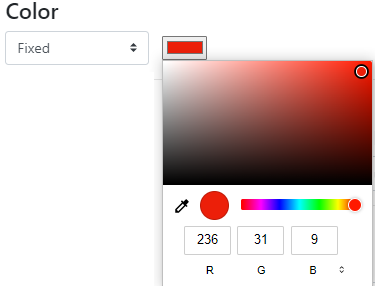
- Hue, saturation, luminosity (HSL)
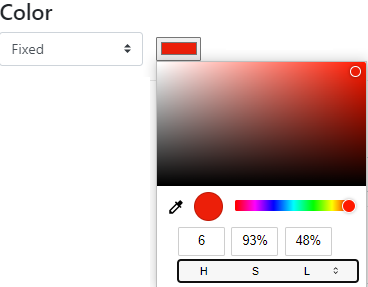
- HEXagesimal (HEX)
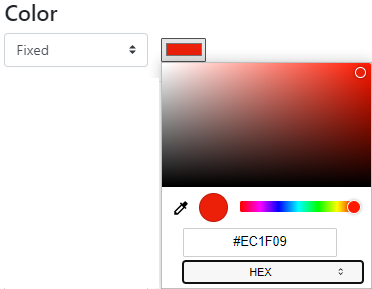
8.2.2 Setting modes of the color
- Fixed mode of color means that the ton is identical for all nodes.

- Conditional mode means that the color of the nodes will vary according to several parameters.

The color/tone can vary according to a specific variable and its type.
The reference for the color schemes is Cynthia Brewer palette for Diverging, Multi Hue and Single Hue. See: Color Brewer advices for maps. An Extra Palettes is also proposed in Arabesque.
8.2.3 Color variation as a function of a variable
The color of the nodes can be set according to one of the variables (initial or calculated by Arabesque) that are available in the dataset.
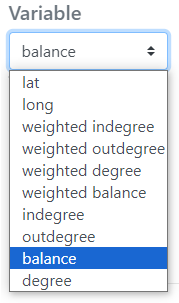
8.2.4 Color variation as a function of the type of a variable
The type of color range (Diverging/Multi Hue/Single Hue/Extra Palette) will have to be realized according to the type of the variable to represent (quantitative/qualitative, discrete/continuous, stock/ratio/scale, …).
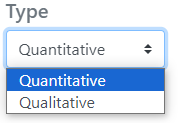
The progression (up/down) of the color range depends on that of the value range: it can be direct or inverse. The checked box means an inverse progression: a light color is applied to a strong value.

8.3 Node’s stroke
The outline of the nodes can be modified: their color and their thickness (between 0 and 1 px).

8.4 Node’s size
The size of the nodes can be fixed and the weight defined.

8.4.1 Nodes’ size weighted by a variable
The size of the nodes can be weighted by a variable according to one of the initial or additional variables available in the dataset (hereby the balance).
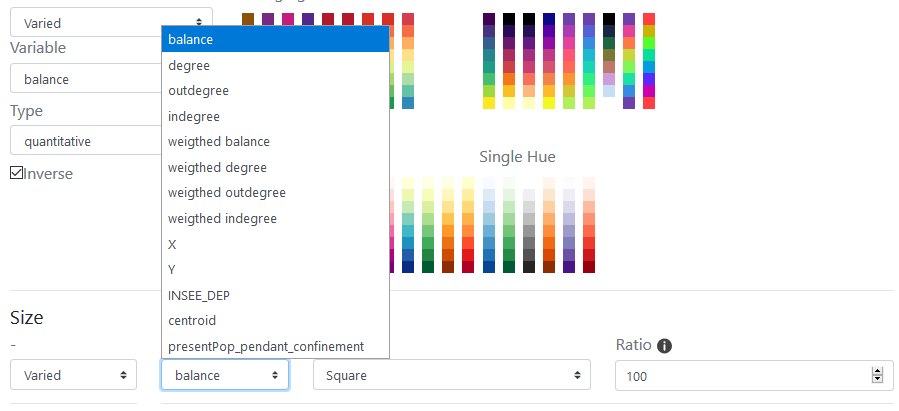
Three functions to set the size of the node according to the corresponding value are proposed: linear, square, square root and logarithmic.s

8.4.2 Nodes’ size ratio
The ratio representing the max width in pixel of the graphic features can be defined - according to the map bounding box, to obtain an image with balanced features (neither too small nor too big).
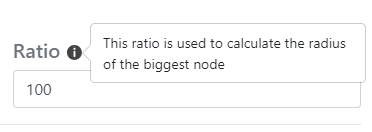
8.5 Node’s Text
Text can be displayed as node labels.

The text can be defined according to one of the variable available in the nodes’ data set, here the name, the type, etc..
8.6 Node’s Opacity
The transparency of the color of the nodes can be fixed for all of them.

The nodes’ opacity can also vary according to a quantity, corresponding to one of the quantitative variables available in the nodes file, for native or calculated indicators at import.
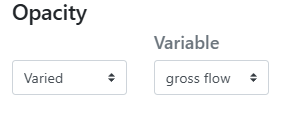
The transparency can be parameterised according to four scales: linear, square, square root and logarithmic.

The opacity value, between 0 and 1, is set for one or two values (minimum and/or maximum).

8.7 The nodes’ geometric parameters
Not implemented yet. Upcoming projects.